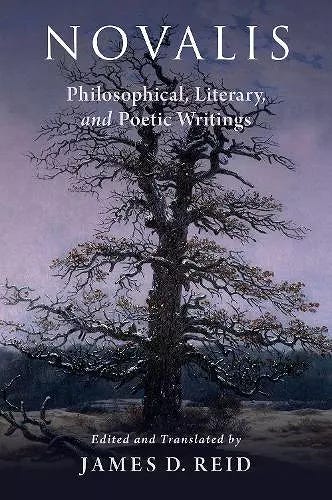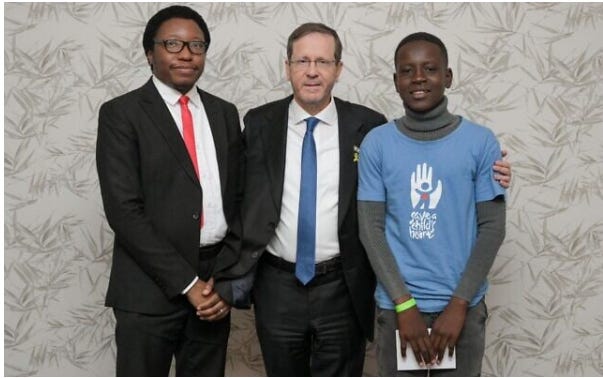News Junkie? Those Daily Newspaper Days, the Competing AM v. PM Dailies
All that is in the Memory Hole
“Basically, financial reporting is this sinking hole at the centre of journalism. You start by swimming around it until finally, reluctantly, you can’t fight the pull anymore and you get sucked down the drain into the biz pages.”

It is an amazing g-force terminal velocity, neck whipping mad mad mad mad world of cardboard characters, infotainment, dead-end commercialized propaganda that makes a grown dude cry.

Yeah, I am in the local rag, now a once a week thin shadow of its old self, the Newport Lincoln County Leader. One long Commentary out today, and then a defense of a previous one whereupon two fools attack my credentials and took issue with the term “genocide” and the very idea of Nakba and “ethnic cleansing.”

Palestinian mother, 1920.

The forced expulsion of Women & Children from Tantura May 1948.


In his 2013 book, My Promised Land: The Triumph and Tragedy of Israel, Ari Shavit, the former Haaretz columnist, writes about the massacre in Lydda (Lod) and the expulsion from Ramle. Shavit’s book was widely read in the Jewish community, and for many Jews, it was the first time that they heard about a massacre and expulsion that Israel committed in the 1948 war. For some, it was a shocking revelation. But Shavit justified it as a necessary action:
“Lydda is our black box. In it lies the dark secret of Zionism. The truth is that Zionism could not bear Lydda. … If Zionism was to be, Lydda could not be. If Lydda was to be, Zionism could not be.” (p. 108)
What I published in October:
Allegiances to the Genocidaires, Military Offensive Weapons, and Finance Capital
You have to hand it to both parties – trillions of US taxpayer money sent to an occupied land that has full-throttle displayed its genocide (US-backed) on defenseless people. Two years anniversary.
Oh, don’t fret: we have over fifty national month of October celebratory things, from the absurd, stupid, silly and a few serious ones.
But make no mistake about it – the US, Britain and Germany are the major weapons suppliers to Israel. However, there are literally tens of billions of dollars going back and forth from and to that genocidal state.
Sort of like the good old days when Hitler and his regime had that back and forth commerce, with, hmm: German and international corporations like IG Farben, Ford, General Motors (GM), IBM, and Standard Oil. There were hundreds of smaller companies.
We have now in Lincoln County, thousands losing their Medicare Advantage plans through Samaritan Health. And what are the democrats up against the republican reprobates doing?
Well, we have two senators, one who is Israel-First and who puts his Jewish background above America, for sure, in many people’s minds: The genocide campaign has killed more than 350,000 Palestinians, almost all civilians, and left the rest of the population of Gaza in plots of land that make concentration camps look livable.
Sen. Jeff Merkley co-sponsored six bills in September 2024 to halt a $20 billion U.S. arms sale to Israel. Some of it: $675 million worth of bombs and a shipment of 20,000 assault rifles to Israel.
“We have a profound moral responsibility to end this collective punishment of innocent civilians,” Merkley said in a statement, adding that until the Israeli government makes critical international food and medical aid available to Palestinians in Gaza, the U.S. should not send any more weapons.
Yet, the other senator, Ron Wyden, voted with all Republicans against stopping the military killing materiel to Israel.
Even non-Jewish Merkley drops caveats in his statement: “Every moment the U.S. fails to demand a massive influx of food or to provide that massive influx of food ourselves, we are complicit in Netanyahu’s strategy of starving Palestinians. This breaks every moral code and every religious code. Until every child and every mother have sufficient nutrition, America should not send a single dollar or a single bomb to Netanyahu’s government. No more bombs. More aid.”
Some of us journalists go way back (since 1973) and we’ve even studied rhetoric and propaganda and taught college communications (since 1983).
Let it be known: Israel has been practicing genocide since 1948, and has been an apartheid state the same number of years. “Mowing of the lawn” was a practice Israel used to murder peaceful protestors and medical workers going to the aid of wounded protestors. Before Oct 2023.
This is not one man’s or one Israeli government’s genocide. Most Israeli Jews want Palestinians gone. Troubling, also, is these Americans supporting Israel with any sort of financial and military and non-military aid are complicit.
Just a month ago the world’s largest association of academic scholars studying genocide passed a resolution saying Israel’s “policies and actions” in Gaza “meet the legal definition of genocide,” established by the U.N. in 1948.
The International Association of Genocide Scholars states that Israel’s “policies and actions” in Gaza amount to war crimes and crimes against humanity.
Aiding and abetting war crimes is a crime. The crime of genocide.
This society is broken, and has been way before Ronald Reagan, for sure, but like exponential growth of a bacteria left to grow, each year there are more deaths by 1,000 cuts to social, health, education, economic, spiritual social safety nets.
Throwing money at the MIC – Military Industrial Complex – for seventy years, and throwing money at Israel for 77 years has done its work by lining the pockets of CEOs, bankers, billionaires in finance, and now the techno fascists. Names like Ellison, Altman, Ackman, Karp, Zuckerberg, Adelson, Brin may not be on readers’ tongues, but beware of these new titans of pain.
Former CIA analyst and now activist, Ray McGovern calls that military machine the MICIMATT: Military-Industrial-Congressional-Intelligence- Media-Academia-Think-Tank Complex.
In reality, a society that has outrageous costly and failing medical care for all, let alone seniors, is a society that has been bought and sold down the river. For profit medicine? For profit electricity? Telecommunications? Hell, we can’t even run our own county’s school busses anymore without paying a for-profit outfit to transport our kiddos – Student First, owned by EQT Infrastructure, a Swedish private equity firm.
If you were to take one of my critical thinking writing courses from a few years ago, you’d be flummoxed with these sorts of stories. You’d be exposed to censored stories and memory-holed history. You would have learned about amazing facts which have been held back from the average American citizen.
“If the U.S. Can’t Boss the World, It Will Spitefully Destroy It,” is an article by Jeremy Kuzmarov, a community college instructor in Oklahoma and managing editor of Covert Action Magazine. He was just on my radio show, Finding Fringe at KYAQ FM.
We talked about how this country is now in super dire straits – death by a thousand cuts every hour under the Trump regime. But we also delved into the history of both parties responsible for wars, invasions, coups, sanctions, false flags, and conspiracies to, well, destroy the world.
Now we have bald face liars admitting they hate the American people, admitting that they control the wealth, food, energy, data, water, futures, land and possessions of a majority of the world.
Read James Baldwin to understand his prescient quote: “All of the Western nations have been caught in a lie, the lie of their pretended humanism.”
No Name in the Street is a four-page apocalyptic tour de force, in which Baldwin imagined a system built on exploitation and war collapsing on itself.
Ahh, the good old days when he wrote this – 1972!
Dear Editor:
So, a long attack on me was published Nov. 12, along with a snarky fucked up letter to the editor also attacking the above “facts.” Opinion piece. Here, just published today, my letter response:
Dear Editor — Recent attacks (Nov. 5 commentary and letter to the editor) on my integrity as a writer and as an educator, plus the inane label of “antisemitism,” just don’t hold water. The thing about going after someone’s credentials and lifework is called ad hominem attack. Kill the messenger is also a term I could deploy with two personal attacks on my Oct. 15 Commentary.
Learning curves are steep in a country of people who have been miseducated, propagandized, and drawn and quartered by an elite media, whether right or left of some imaginary middle.
For real journalism on Gaza and the Jewish genocide, as well as just general news, try Drop Site News (dropsitenews.com). Try heading over to Monthly Review On-Line for deeper analyses of USA the Empire, and its insane and perverted hatred of socialism, as well as its relationship with an apartheid and genocidal state called Israel, the Occupied Land of Palestinians (monthlyreview.org). Then, of course, The Intercept, theintercept.com, will get you more news.
Again, steep learning curves are present when one comes out of K12 and college in this Empire of Chaos, War, Pain, and Terror. Try Tricontinental: Institute for Social Research — thetricontinental.org. I could list five dozen sites here that easily counter the narratives cooked up in the minds of Americans who have been colonized by one-sided narratives and bizarre takes on US and Global history.
Lifetimes of work and research and ground-truthing easily shoot holes into what most Americans and Westerners have come to believe are their “truths.”
Paul Haeder, Waldport
*****
Moving on, alas, my buddy, and a paid subscriber, Kelly Kloss in Wisconsin, who I have written about in Substack columns, well, I just visited him with my wife, went to George Floyd memorial (I wrote about THAT, too, in the Substack). You see, I met his nurse daughter who is letting two adults stay in the house rent free — a daughter in her early twenties, and a nephew who is 22.
The boy, well, he spends copious amounts of time in his basement room, with digital gaming at the core of his life. He also drinks, and alas, the news from Wisconsin is that MOST young people drink, to excess, and the bars are the scene for a lock-down kiddo who lost his mother at age 8, and his safety nets — i.e. men in his life, well, not present in any sense of the word.
So, he gets that infamous DUI or DWD or whatever they call driving under the influence of booze.
He has a shitty job, and that car he has is his lifeline to get to work. And, so, past midnight, he was stopped by those flashing lights, and alas, the kiddo copped to everything.
We are talking about $1000 here and a $1000 and $250 here and there, and then a lawyer? And some sort of mercy from the judge or DA, to, well take into consideration a first offense, and also, is there Diversion without the encumbrance of fines, fees, tuition, court costs, class demands, without just throwing the debtors’ book at him?
Now now, the perverts in the Larry Summers-Trump-Billionaire Club, they laugh laugh laugh, because there is money to be made and had in cycling young and old people through the criminal injustice system.

Read: Go to Paulokirk and hit the find/search icon and put in “Wisconsin”

BOOZE and Cheese and Snow mobiling and Green Bay Packers and:
- Dominance in Rankings: Reports have consistently shown that a large majority of the counties with the highest rates of excessive drinking nationwide are in Wisconsin. For instance, in one report, 41 of the top 50 “drunkest counties” were located in the state, making it the epicenter of the U.S. drinking culture.

Now now, the media will not cover the real reason for this fucking booze hell hole, for sure — legalized brain-rotting, mind-altering, anger-inducing, rape- facilitating, head-on collision encouraging, police blotter making, jail time reality, prison time consequences BOOZE.

Yeah, Saturday college betting and Sunday NFL betting and, well, BOOZE:
- High Prevalence of SUDs: A significant majority of the incarcerated population meets the criteria for a substance use disorder. Estimates suggest that 65% of the U.S. prison population has an active SUD, and over 60% of sentenced jail inmates met the criteria for substance dependence or abuse in past surveys. This rate is vastly higher than in the general population.
- Crimes Committed Under the Influence: Many individuals were under the influence of alcohol or drugs when they committed their crimes. Alcohol, in particular, is often associated with violent offenses, including assault, domestic violence, and homicides, because it can impair judgment and lower inhibitions.
- Crimes to Support Addiction: A substantial percentage of incarcerated individuals reported that they committed their offenses (such as property crimes) to obtain money for drugs.
- Comparison of Alcohol vs. Drugs: Diagnoses of alcohol abuse and dependence (47%) and drug abuse and dependence (53%) were fairly evenly distributed among the prison population in one survey, though drug offenses account for a larger portion of federal prison populations.

Well well, where are Hegseth and Glosser-Miller and Trump when you need some counties and homes droned?

What would Costco and Hooters and Walmart and the thousands of small mom and pop bars and liquor stores just in Wisconsin do if booze was, hmm, cocaine? We going to bomb those fucking trucks?




Those good old Norman Rockwell days of foam and hops:

Damn, Wisconsin:

Damn, there’s money to be had in incarceration, litigation, rehabilitation, asset forfeitures, evictions, foreclosures, fines, taxes, fees, tolls, penalties, tickets, restitution!

*****
WELL, the Snakes of America, and those paper tigers, Russia and China and India and the rest of them, here it is now, no? Nah, Maduro wasn’t elected by the people.
Colombian President Gustavo Petro has backed a plan that would see Venezuela’s authoritarian President Nicolas Maduro hand over power to a transitional government that would call for new election, according to a new report.
Colombian Foreign Minister Rosa Villavicencio told Bloomberg that “Maduro would be inclined to accept” if given guarantees that he would be safe from persecution.

The outlet said it’s not clear what the operations might look like, but could involve sabotage, psychological or cyber operations. Trump has not made a final decision on the matter, and officials have also presented options that could see special forces go into Venezuela to try to catch or kill Maduro.
Another plan involves capturing oil fields or critical infrastructure, but analysts and former Venezuelan officials said Russian weapons held by the regime increase the chances of casualties, the outlet said in another report. However, they said, any air defense systems or fighter jets would be destroyed by precision strikes before any operation.

Billionaires and the uniformed mercenary corps and Democrats and Republicans alike want that OIL, and that REE.

Known drinking and dining locations at Mar-a-Lago
The Beach Club Bistro: Located by the pool and private beach, the Bistro serves beverages along with sandwiches and grilled specialties.
Main Dining Room: This opulent and historic area, where breakfast, lunch, and dinner are served, likely has bar service.
Other venues: The estate also features a billiards room and a tennis pavilion, both of which have been cited in reporting as having bar service.

All about those fucking Tech Monsters: Helicopters sporting long appendages are flying over some rural areas of the country, including here in Colorado. Many of them are part of the U.S. Geological Survey’s Earth MRI program aimed at finding new mineral resources by mapping both the landscape and what lies underground.
The project has had bipartisan support. It started under the first Trump administration and ramped up under Biden, with hundreds of millions of dollars in funding.
*****
Oh, those cold and dreary winters: No connection to proxy wars in other Countries, the Tech Fascists Controlling the Country, Mercenary Forces Fully Funded, Gestapo (ICE, BP, HSS, ATF, SS, FBI, etc) fully and extravagantly funded, in the news.

Kansas, Dorothy!
The only option for folks to seek shelter from the cold this winter will be the Lawrence Community Shelter, the City of Lawrence has announced.

The city and local churches have opened additional shelters during recent years to ensure that anyone in need of a warm place to go will have one. That will not happen this year, according to the city.
Instead, “All emergency winter sheltering is centralized at LCS for safety and service coordination,” the city announced Tuesday.
The city’s Community Building downtown and recreation centers will no longer be available as warming centers this winter, either, as the city has implemented access fees to use the centers.

Wisdom and hell from The Hill, some Talmudist named Kurtz!
The U.S. Interagency Council on Homelessness said that local governments that regulate street camping or implement other policies seen as enforcing basic norms among homeless people “reverse course and criminalize homelessness.” HUD even created incentives for nonprofits to lobby against such policies.
Housing First, paired with relaxed policies on street camping, focused strictly on offering “carrots” to individuals on the street, often without proper attention to whether those individuals were in a state of mind to accept them or succeed through the intervention. As a result, the tools available to state and local governments for responding to homelessness were limited to offering the homeless unconditional, subsidized housing.
And that didn’t work.

Lies, of course, since housing first has to be coupled with “it takes a village to get someone off drugs and booze, and it takes a team to work on mental health, and it takes real sort of positive activities to get people into a new mindset AND it takes smart people to realize that camping, or rough sleeping, IS not the face of people without affordable and doable apartments and housing. How many live in the basement, in the garage and go to school and work? This whole concept of homeless people being only THOSE on the streets and panhandling, well well, it does takes fucking smart people.”

INVOLUNTARY internment and commitment laws?
Fortunately, several states have begun to move away from the Housing First approach over the last five years. Florida, Georgia and Utah reprioritized state-level funding toward non-Housing First programs. Utah plans to open a 1,300-bed campus with capacity for involuntary treatment of the most mentally ill and addicted homeless.

And so, the Stephen GLosser Miller Gestapo is on HIGH ALERT.
That AmeriKKKa, the one exported to Venezuela, and the rest of Latin America.

Migrants thought they were in court for a routine hearing. Instead, it was a deportation trap
In a court system with a backlog of about 3.8 million asylum cases, families have been torn apart and lives upended. Due process seemingly is an afterthought.
“When Americans picture a courtroom, there are a few core expectations” of fairness, dignity and impartiality, said Ashley Tabaddor, a former immigration judge in Los Angeles and past president of the National Association of Immigration Judges.
“That’s what makes a court — not a room with a bench or person with a robe,” she said. “But what we have here is a vision completely turned on its head.”
Over the past nine months, the Trump administration has fired almost 90 immigration judges seen by Trump’s allies as too lenient, directed masked officers to handcuff migrants at closed asylum hearings and sent memos instructing judges to fall into line.
Unlike federal courts, where there are strict rules of procedure and judges have lifetime tenure, the Justice Department runs immigration courts and the attorney general can fire the judges with fewer restraints.

Now now, what could go wrong with that murdering state, Saudi IsrArBia, getting in on the act? Trump Says Saudi Leader Knew Nothing of Journalist Murder, Rejecting CIA Assessment Musk’s xAI and Nvidia to Develop Data Center in Saudi Arabia
Executives unveiled plans at Wednesday gathering featuring President Trump, Crown Prince Mohammed bin Salman.

Yeah, clean DATA centers my ass: Bloomberg, that BILLIONAIRE’s propaganda rag:
Malaysia’s palm oil giants, long blamed for razing rainforests, fuelling toxic haze and driving orang utans to the brink of extinction, are recasting themselves as unlikely champions in a different, potentially greener race: the quest to lure the world’s artificial intelligence (AI) data centres to the South-east Asian country.

Palm oil companies are earmarking some of the vast tracts of land they own for industrial parks studded with data centres and solar panels, the latter meant to feed the insatiable energy appetites of the former.

The logic is simple: data centres are power and land hogs. By 2035, they could demand at least five gigawatts of electricity in Malaysia – almost 20 per cent of the country’s current generation capacity and roughly enough to power a major city like Miami. Malaysia also needs space to house server farms, and palm oil giants control more land than any other private entity in the country.

- poet Novalis in 1798, who wrote that religion works “as an opiate—stimulating; numbing; quelling pain by means of weakness”
Novalis used the metaphor in a different context and with a more nuanced meaning than the later, more famous use by Karl Marx, who characterized religion as the “opium of the people” in his 1843 work A Contribution to the Critique of Hegel’s Philosophy of Right. While Marx viewed religion as a harmful distraction that prevented revolutionary goals, Novalis, a deeply religious thinker, had a more complex view, acknowledging both its pain-reducing qualities and its capacity for providing solace, hope, and faith.

Ahh, clear and present danger — who the hell would trust a Christian (sic) cult tied to Zion? Good move, China, keep it up, please: Eighteen leaders of a major Chinese underground church were formally arrested on Tuesday, a Christian NGO advocate told Reuters, meaning they will eventually face trial and a potential prison sentence of up to three years.
Nearly 30 pastors and staff belonging to Zion Church, an unofficial “house church” not sanctioned by the government, were detained by police nationwide in mid-October, Reuters earlier reported, in the biggest crackdown on Chinese Christians since 2018.

God’s/Trump’s Creatures.
The Trump administration moved on Wednesday to roll back Biden-era protections for endangered species and their habitats.
The Interior Department’s Fish and Wildlife Service and NOAA’s National Marine Fisheries Service proposed restoring rules from the first Trump administration that stripped safeguards for plants and animals threatened by human development and a warming planet.

They’ve built a replica of Noah’s Ark in Kentucky. In case God’s wrath delivers a Trump victory in November.

Oh, those goddamn loyalty oaths. Governor Bush has them in Texass where I taught college, and they are everywhere. Colleges say no to Trump administration higher ed compact.

What would the world look like if EVERYONE in the social-cultural-legal-educational-environmental-financial JUSTICE arenas said, Hell no, we are not going to take it anymore.
Higher education advocates say the compact equates to a loyalty oath and infringes on the academic freedoms that are inherent to many universities’ missions.
These bloody people can’t and won’t say NO to the hasbara and hell on earth these Israeli Jews foment.
Come war, peace or pandemic, African doctors train in Israel to save lives back home

Dr. Lise Mumporeze was 5 years old when her entire family was slaughtered in the Rwandan genocide in 1994.
About 800,000 people of the Tutsi minority were killed, mostly by members of the Hutu ethnic majority. However, nearly 32 years later, Mumporeze, now 37, says the prevailing sentiment in Rwanda today is one of reconciliation.
“That moment destroyed us then, and if we don’t come together, this is what will happen again,” Mumporeze recently told The Times of Israel.
More than 160 doctors and nurses have participated in the program over the years, including during the COVID-19 pandemic. Currently, eight doctors are interns at the children’s hospital.
On that evening, Mumporeze flew home to rejoin her husband and their two children — and to begin work as the first pediatric intensive care specialist in Rwanda, working at King Faisal Hospital in the capital, Kigali.

Despite Mumporeze’s sunny disposition — she said that “life is painful but we have to try to stay positive” — she remembered that when she first heard about the October 7, 2023, Hamas atrocities, her first thought was, “Oh no, this is happening again.”
“I had experience with war when you lose everything and you have to run,” Mumporeze said.
She was so frightened by the possibility that Ben Gurion International Airport in Tel Aviv would close and she would never see her two children again that she made a hasty retreat to Rwanda.
While she was there, however, she saw that life in Israel was continuing. After two weeks, she returned to Israel.

These people will follow Zionists into hell.
Herzog previously said publicly that the “entire [Palestinian] nation” was responsible for the October 7 attacks on Israel, and two months later, he was witnessed personally signing artillery shells due to be fired into Gaza.
*****
Here’s another judge on Trump and Glosser-Miller’s hit list: A judge has dismissed a Trump administration legal challenge to New York policies that block immigration officials from arresting people at state courthouses, saying the federal government can’t force states to cooperate with those enforcement efforts.
U.S. District Judge Mae D’Agostino late Monday granted New York’s motion to dismiss the government’s lawsuit, one of several legal actions from the Republican administration targeting state and local policies over immigration enforcement.

We know which one is the house negro!

Malcolm describes the difference between the “house Negro” and the “field Negro.” Michigan State University, East Lansing, Michigan. 23 January 1963.
Transcribed text from audio excerpt.

So you have two types of Negro. The old type and the new type. Most of you know the old type. When you read about him in history during slavery he was called “Uncle Tom.” He was the house Negro. And during slavery you had two Negroes. You had the house Negro and the field Negro.
The house Negro usually lived close to his master. He dressed like his master. He wore his master’s second-hand clothes. He ate food that his master left on the table. And he lived in his master’s house–probably in the basement or the attic–but he still lived in the master’s house.
So whenever that house Negro identified himself, he always identified himself in the same sense that his master identified himself. When his master said, “We have good food,” the house Negro would say, “Yes, we have plenty of good food.” “We” have plenty of good food. When the master said that “we have a fine home here,” the house Negro said, “Yes, we have a fine home here.” When the master would be sick, the house Negro identified himself so much with his master he’d say, “What’s the matter boss, we sick?” His master’s pain was his pain. And it hurt him more for his master to be sick than for him to be sick himself. When the house started burning down, that type of Negro would fight harder to put the master’s house out than the master himself would.
But then you had another Negro out in the field. The house Negro was in the minority. The masses–the field Negroes were the masses. They were in the majority. When the master got sick, they prayed that he’d die. [Laughter] If his house caught on fire, they’d pray for a wind to come along and fan the breeze.
If someone came to the house Negro and said, “Let’s go, let’s separate,” naturally that Uncle Tom would say, “Go where? What could I do without boss? Where would I live? How would I dress? Who would look out for me?” That’s the house Negro. But if you went to the field Negro and said, “Let’s go, let’s separate,” he wouldn’t even ask you where or how. He’d say, “Yes, let’s go.” And that one ended right there.
So now you have a twentieth-century-type of house Negro. A twentieth-century Uncle Tom. He’s just as much an Uncle Tom today as Uncle Tom was 100 and 200 years ago. Only he’s a modern Uncle Tom. That Uncle Tom wore a handkerchief around his head. This Uncle Tom wears a top hat. He’s sharp. He dresses just like you do. He speaks the same phraseology, the same language. He tries to speak it better than you do. He speaks with the same accents, same diction. And when you say, “your army,” he says, “our army.” He hasn’t got anybody to defend him, but anytime you say “we” he says “we.” “Our president,” “our government,” “our Senate,” “our congressmen,” “our this and our that.” And he hasn’t even got a seat in that “our” even at the end of the line. So this is the twentieth-century Negro. Whenever you say “you,” the personal pronoun in the singular or in the plural, he uses it right along with you. When you say you’re in trouble, he says, “Yes, we’re in trouble.”
But there’s another kind of Black man on the scene. If you say you’re in trouble, he says, “Yes, you’re in trouble.” [Laughter] He doesn’t identify himself with your plight whatsoever. —-
SOURCE: X, Malcolm. “The Race Problem.” African Students Association and NAACP Campus Chapter. Michigan State University, East Lansing, Michigan. 23 January 1963.
*****
November 19 piece:
Marks on the Calendar – Two Years into Eradication of a People So Move on
By Paul Haeder
Ahh, the banned books week passed (it should be a daily reminder that freedom of speech and thought are illusory in Capitalism). That was Oct. 5 through 11, and you can Google what intense censorship has always occurred in USA and is going on now with the new brownshirts in office.
You can call school and library administrators, school board and library board members, city councilpersons, and your elected representatives to ask them to support the right to read! But most of them are running scared and are completely cowed by their own shadows.
Imagine California, running this House Bill and it passing with the Ray-Ban governor’s signature –
The law no longer references Israel’s war in Gaza, but critics have said it could still have a chilling effect and prevent open discussion on contentious issues in the classroom.
“Teacher discourse on Palestine or the genocide in Gaza will be policed, misrepresented, and reported to the antisemitism coordinator,” Theresa Montaño with the California Faculty Association said in a statement.
So, no need to burn books or ban them since K12 students will be policed and brought before boards of inquiry if they dare talk about the Nakba and how that ethnic cleansing that started in 1948 (earlier, really, but don’t tell our representative Gomberg that!) relates to another passing October critical thinking milestone – Indigenous People’s Day.
That was October 13, and with the fanfare of stormtroopers hitting Portland’s streets and even our own backwater county seeing ICE masked raiders taking a citizen away, forget about finding deep discussion about that day of infamy – celebrating for ONE 24-hour period our own legacy of indigenous culture and wisdom.
The schools might not even be able to put up posters stating the following with this new regime of Stephen Miller and his Gestapo infecting the great shining city on the hill: “We honor the Native American people for their culture including art and many crafts, their food, their clothing, their grit and endurance, their goodness and influence. According to the U.S. Census Bureau, there are about 4.5 million Native Americans and Alaska Natives in the United States today. That is about 1.5 percent of the population in the United States. There are ten main areas of North America where the Native Americans have lived over the last 2,000 years.”
The jig was up more than 250 years go, throughout the enslavement of Africans, but recall that we had politician after general after newspaper editor repeating in variations of a theme these racist but highly American statements in regard to our Native People:
· In 2021, Rick Santorum claimed there was “nothing” in America before colonization and little Native American culture present today.
· Trump’s boy, Andrew Jackson, signed the Indian Removal Act of 1830, which forced many eastern tribes, such as the Cherokee, Choctaw, and others, off their ancestral lands. This policy led directly to the “Trail of Tears.” Jackson’s own words often framed Native Americans as uncivilized and an obstacle to American progress.
· “The only good Indian is a dead Indian” is a racist proverb originating from General Philip Sheridan.
Maybe schools will allow coursework — now that we have National Day of Remembrance or Sorrow — to include American Indian scholars questioning the origins of Thanksgiving.
“Almost any portrait that we see of an Indian, he is represented with tomahawk and scalping knife in hand, as if they possessed no other but a barbarous nature. Christian nations might with equal justice be always represented with cannon and ball, swords and pistols,” states Elias Johnson, A Native Tuscarora Chief.
I doubt this book has been banned from public libraries: Let’s Play Indian, is a children’s book by Madye Lee Chastain. It’s one of countless examples of “playing Indian,” a practice engaged in by outsiders who appropriate, or take on, American Indian identities and cultural ways. Chastain’s main character transforms herself into “a really truly dressed-up painted Indian,” who runs, whoops, and waves her tomahawk.
Forget about K12. I believe OCCC would get pushback if, say, I taught writing and communication including an amazing young Lakota’s Red Nation broadcast Nick Estes is a Lakota activist, writer, and scholar whose work delves into settler-colonialism, indigenous history, and decolonization. He is the author of Our History Is the Future: Standing Rock Versus the Dakota Access Pipeline, and the Long Tradition of Indigenous Resistance. I’d be highlighting Nick’s on-line advocacy for Palestinian liberation, wherein he highlights the ongoing genocide in Gaza by exploring the intersection of the struggles faced by Palestinian and Indigenous peoples in America.
Drill down into Native American perspectives and unmask almost all myths perpetrated in this country. But as you pass the gravy on Nov. 27, remember it’s not all a bed of pumpkins and cranberries:
Federal agents kept the Dakota-Sioux from receiving food and provisions. Accordingly, on the brink of death from starvation, some fought back, resulting in the Dakota War of 1862. In the end, President Lincoln ordered 38 Dakota men to die from hanging, but he too was spinning PR, so he felt that the first Thanksgiving (1863) offered an opportunity to bridge the hard feelings amongst Natives and the federal government.
“It was propaganda,” Dr. Kelli Mosteller, Citizen Potawatomi Nation’s Cultural Heritage Center director explains. “It was to try and build this event so that you could have a deeper narrative about community building and coming together in shared brotherhood and unity.”